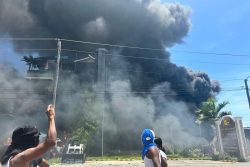On its Facebook page this week, the World Bank announced the publication of a new book which explores a new method of monitoring the quality of urban life. According to the World Bank, this new method combines objective and subjective information in its assessment, using the market price of housing and individuals’ life satisfaction in Bogota and Medellin, Colombia; Buenos Aires, Argentina; Lima, Peru; Montevideo, Uruguay and San Jose, Costa Rica.
The Quality of Life in Latin American Cities: Markets and Perception, which is edited by Eduardo Lora, Andrew Powell, Bernard van Praag and Pablo Sanguinetti reveals that housing prices show how the market values characteristics of not only a house itself, but also its surroundings. Life satisfaction, though less measurable, can be approximated using a simple survey question, the editors posit.
Together, they feel, such measurements can be used to answer questions such as which problems have the greatest impact on people’s opinion of city management, and which have the most widespread effects. Quality of life measurements, it was said, can also address the question as to whether the city is perceived as improving or growing worse in certain aspects, and whether perceptions match objective indicators.
Among other questions are: “Do gaps between perception and reality differ among parts of the city, especially high and low-income areas?
“Where can homebuilders most feasibly seek solutions to problems such as inadequate road infrastructure, a lack of recreation areas or poor safety conditions?
“Which problems should be addressed first by government authorities in light of their impact on the well-being of various groups of individuals and in light of private actors’ ability to respond?
“Which homeowners derive the greatest economic benefit from public infrastructure or services?
“When can or should property taxes be used to finance the provision of certain services – or the solution of certain problems?”
This is in fact how modern cities operate. Location and aesthetics are important in maintaining property values. Generally, the market value of a home would be much lower in an area where road infrastructure and utility services are poor. Prices would be higher in neighbourhoods where these services are top notch and where there are nearby parks or other recreational facilities as well.
In quality of life situations, it has been proven in several parts of the world that when a neighbourhood starts to become ‘rough,’ property values drop. A case in point is the city of Irvington, New Jersey in the USA. Over the past ten years or so, there has been a huge influx of West Indian immigrants, mostly Haitians, and the characteristics of the several neighbourhoods they have inhabited gradually has begun to change. For instance, street littering and loitering increased to almost endemic proportions and many of the original residents of those areas started to move out; their surroundings were no longer aesthetically pleasing. However, because of the same surroundings and more recently, the financial crisis, many found it difficult to sell their properties and have had to let them go ‘for a song’ while several others remain boarded up and are likely to become havens for the homeless and drug addicted.
While perhaps this would be the case in the Latin American cities cited in The Quality of Life, it is an alien concept in Georgetown. While property prices are lower in the depressed areas, there is no aesthetically pleasing residential area in the city – unless the residents of that area work very hard to make it so. And this would include not only paying to have the drains cleaned and the grass on the government reserves cut, but also endless lobbying to ensure that no rum shop, restaurant, auto mechanic or other business is allowed to take root. In addition, there is no community that is spared the outages, water shortages, bad roads and mosquito and vermin infestation problems. However, unlike other modern city residents Georgetowners rarely leave – unless they are leaving the country entirely – as there is no place where the situation is any better. And regardless of how terrible the surroundings are property prices have been on an upward spiral for more than a decade and it seems unlikely that they will begin to drop anytime soon.
The World Bank book can be used to monitor and measure quality of life in Latin America and other parts of the world. In Guyana it has been set at ‘piss poor’ with the possibility of change being highly unlikely in the current circumstances.









